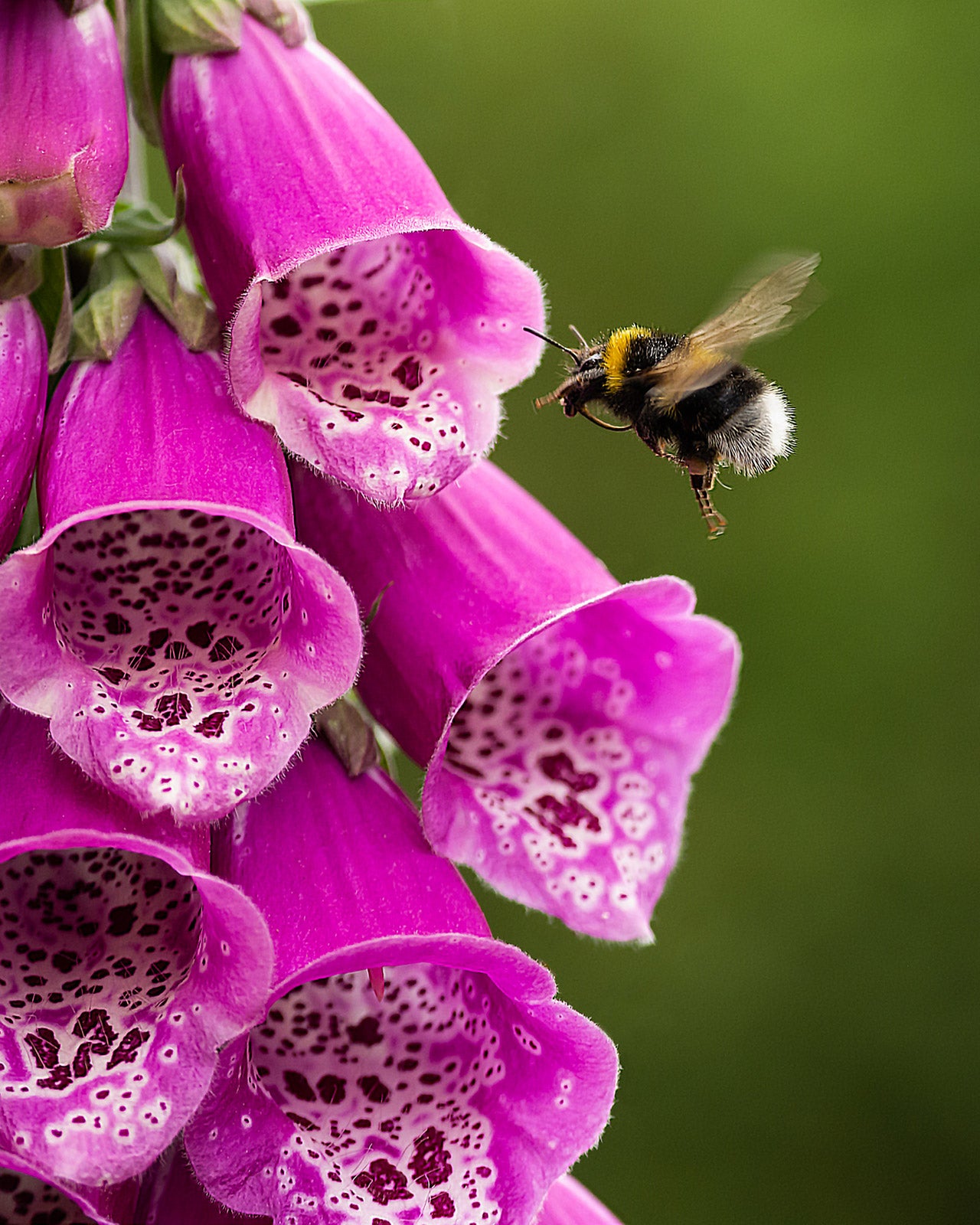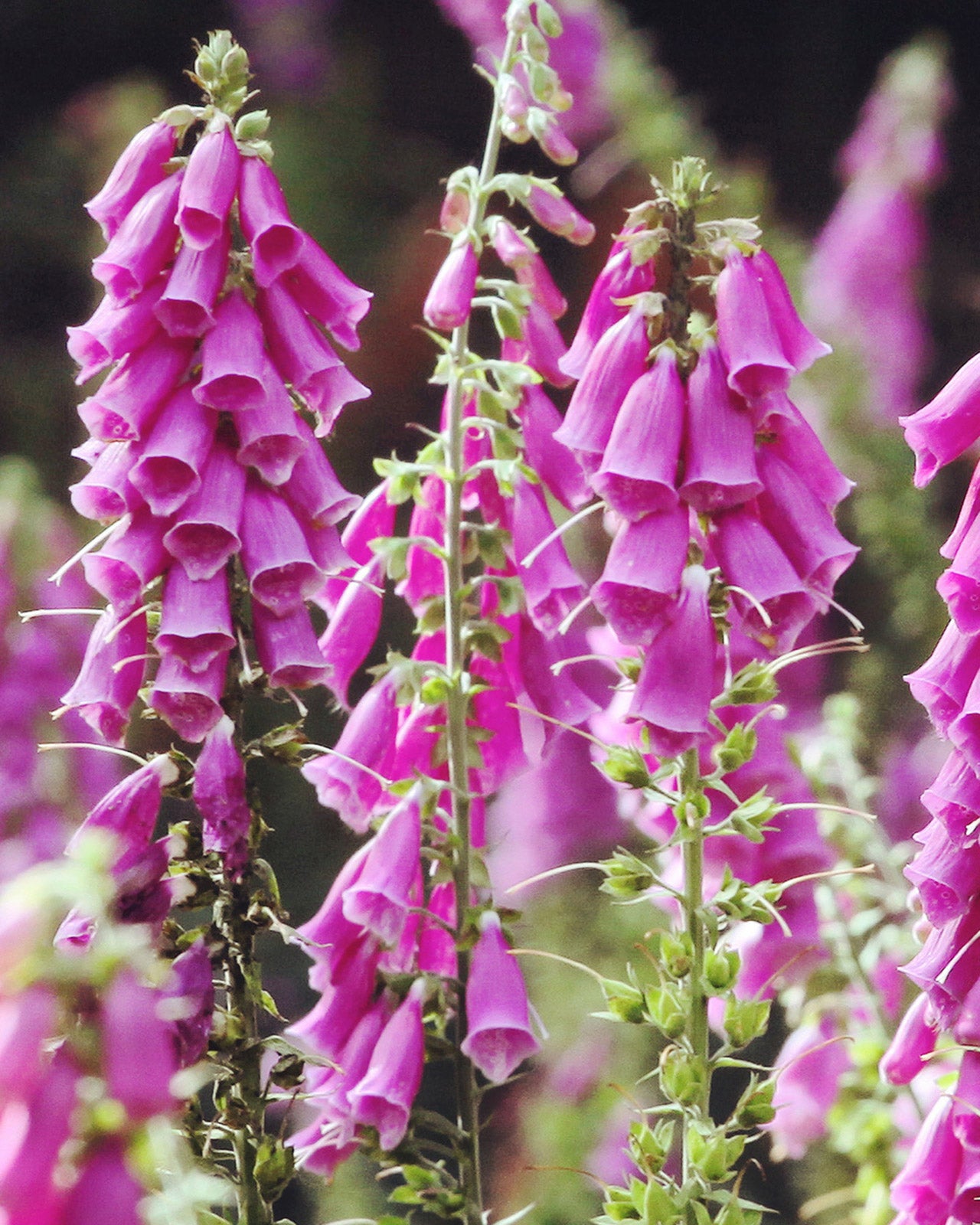

-
Why we like this plant
Digitalis purpurea is an excellent choice for adding height, structure, and a touch of wild beauty to the garden. Its ability to attract pollinators and naturalise in suitable conditions makes it a valuable plant for wildlife-friendly gardens.
-
About this plant
One of the most recognisable wildflowers, Digitalis purpurea is a dramatic and architectural plant that thrives in woodland gardens, cottage-style planting, and wildlife-friendly borders. Its tubular, pendulous flowers—most commonly in shades of purple with speckled throats—bloom from late spring to midsummer, creating an enchanting vertical accent. Highly attractive to bees, particularly bumblebees, this low-maintenance plant prefers partial shade but can tolerate full sun in moist, well-drained soil. While beautiful, foxgloves are highly toxic if ingested, so caution is advised around children and pets.
-
Key features
- Elegant spires of tubular purple flowers with speckled throats
- Attracts bees and other pollinators
- Thrives in partial shade and woodland settings
- Ideal for cottage gardens and naturalistic planting
- Biennial or short-lived perennial, self-seeding freely
-

Height and
spread -

Growth
habitUpright, clump-forming
-

Moisture
Prefers moist soil but tolerates some dryness
-

Position in
the GardenWoodland gardens, cottage gardens, mixed borders
Planting guide
- Space plants 30–45cm apart for good airflow
- Plant in groups for a naturalistic effect
- Prefers slightly acidic to neutral soil
Care tips
- Plant in moist, well-drained soil in partial shade
- Water regularly during dry spells
- Remove spent flower spikes to prolong flowering
- Allow some flowers to go to seed for natural regeneration
- Deadhead before seeds mature if self-seeding is not desired
Winter care
- Leave basal rosettes intact over winter
- Apply mulch in colder regions to protect young plants
- Remove any dead foliage in early spring











